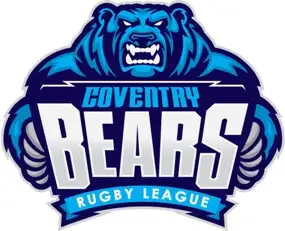Coventry point the way to a more interesting future

While it probably went almost unnoticed in some of the more ‘traditional’ rugby league parts of the country during the busy Easter weekend, one game in Warwickshire might just have heralded an important step for the sport.
Coventry Bears launced their League One campaign on April 3, beating Oxford 32-10. Significantly, the crowd numbered 721, an impressive figure for a game involving two expansion clubs in the game’s third tier.
There are some Championship clubs who would look enviously at that figure, if it is to be sustained.
But rugby league in Coventry has a history which runs deeper than many might think.
A Northern Union club was established in the city in 1909. Their first season was 1910/11, and they played their games at the Butts, site of the current club’s home ground.
Sadly, they folded after the 1912/13 season, due to a combination of poor on-field performance, and low gate receipts.
One player, J Tomes, did manage to win an England cap while at Coventry, though.
Coventry RUFC, along with Leicester and Northampton, were also believed to have been paying their players during the early years following the split in 1895.
A later enquiry whitewashed the clubs, largely because the RFU did not want to drive them into the Northern Union. If history had been slightly different, we could therefore have had a club in Coventry for over a hundred years by now…
Coventry Bears have adopted a positive, inclusive tone in their marketing campaign, and made a point of trying to recruit Coventry rugby union fans.
Rather than adopting a confrontational attitude towards the other code, the Bears have smoothly moved in alongside, attracting a few curious cross-code fans along the way.
The Bears’ marketing team have been in attendance at Coventry RU figures, and their efforts would seem to have paid dividends.
It helps that the Bears also play at the Butts Park Arena, the home of the rugby union team, but there is also a cultural kinship between the rugby fraternity in Cov and the traditional rugby league communities.
Coventry is a post-industrial city where rugby has always enjoyed a working-class following. When I used to live in Warwickshire, I visited the old Coundon Road ground where Cov RU played many times.
No longer there, the ‘stadium’ was a rusting mess of corrugated iron and splintered wood, and a place which felt very familiar to a rugby league fan from Yorkshire.
It certainly had more in common with the Boulevard than the Stoop, much more Hilton Park than Twickers, old chap.
The fans, too, favoured an atmosphere which was more akin to rugby league, rowdy and vocal, not restrained and passive.
They even used to have coal mines in Warwickshire, with Coventry Colliery being located in the village of Keresley.
All of which makes for rich soil for the rugby league farmers of the Bears to plant in, and it seems that they are already reaping the first fine crops.
With another club growing well down the road in Leicester, hopefully in years to come we can see a Midlands rivalry burning bright in our game.
That would then indicate that we were one step closer to being the inclusive, open sport we like to see ourselves as being.